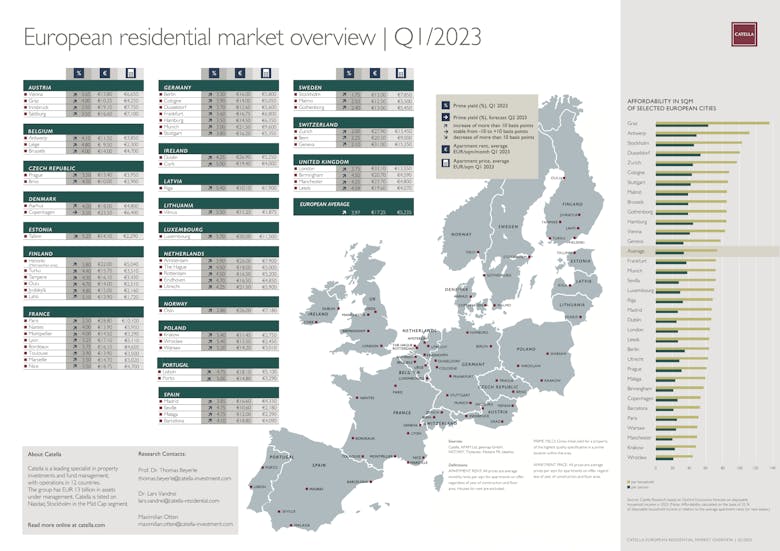International Markets
Paris to block high-rise building again under new ‘bioclimatic’ planning regime
French capital to create new public parks as it seeks to combat housing shortages and mitigate the effects of climate change.
Dubai leads global super-prime sales bounce, as £10mn+ deals falter in London
International super-prime property market activity 'slowed noticeably' last year, says Knight Frank - but things perked up again at the start of 2023.
Global HNWI population & wealth sees biggest decline in over a decade
The super-rich are now prioritising wealth preservation rather than wealth creation, says CapGemini.
Europe’s decade-long residential property bull run is ‘under strong pressure’
Resi valuations across Europe are 'stagnating due to the wide gap in expectations between most buyers and sellers,' says Catella Research, but a new 'lower consensus price floor' is emerging.
How Macron has made France a ‘haven’ for HNW property buyers
'President Macron has been proactive in attracting HNWI’s and digital nomads to France,' argues Leggett Immobilier - leading to a surge of luxury property deals in the last few years.
Global luxury property market index turns negative for the first time since the Global Financial Crisis
Top-end property values are now falling in 16 of the 46 markets tracked by Knight Frank's Prime Global Cities Index, and 'downward pressure' is expected to continue for the next few quarters.
Singapore doubles stamp duty for foreign buyers
The government's latest bid to 'moderate investment demand' will see the tax rate for overseas purchasers hit an eye-watering 60%.
How much residential space can you rent for $2,000 a week around the world?
'Most of these 25 cities have outperformed 2019 rental values and look set to continue growing this year,' says Savills.
Dubai’s super-prime property market is still surging
Prices have soared amid an influx of European buyers and a dearth of turnkey stock.
Berlin, Toronto & Paris have the world’s most ‘climate resilient’ city real estate markets, says Savills
'Investors may increasingly seek more resilient and green real estate in climate stable cities,' says Savills, 'but at the moment they will be competing over relatively few buildings that meet all those…
Mapped: How global housing prices have changed since 2010
Real house prices in 57 countries around the world have increased by an average of nearly 30% over the last 12 years.
LA’s mansion tax is now in play
Los Angeles saw a marked increase in high-value property sales in March, as brokers rushed to close deals before a new transaction tax was introduced on 1st April.











